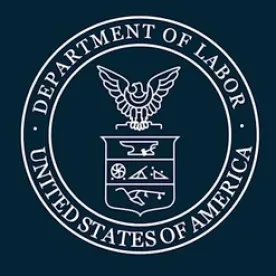In response to the spreading 2019 novel coronavirus (“COVID-19”) pandemic, which has now been declared a national emergency by President Trump, the Department of Labor has released guidance to employers, summarized more fully below:
-
The Occupational Safety and Health Administration (“OSHA”) issued Guidance on Preparing Workplaces for COVID-19 (“OSHA Guidance”), which identifies measures that employers can take to reduce worker exposure to COVID-19 and help reduce its spread.
-
The Wage and Hour Division published questions and answers (“FAQs”) providing information on common issues that employers and employees face when responding to COVID-19, including effects on wages and hours worked under the Fair Labor Standards Act (“FLSA”) and job-protected leave under the Family and Medical Leave Act (“FMLA”). As detailed in our recent Advisory, the FMLA guidance may soon change significantly for certain employers based on recent federal legislation, the Families First Coronavirus Response Act (H.R.6201) (“Bill”), which passed in the House of Representatives and is currently making its way to the Senate. The Bill, as currently drafted, would require private employers with fewer than 500 employees to provide expanded FMLA benefits and paid sick leave to employees in specific emergency circumstances.
I. OSHA Guidance on Preparing Workplaces for COVID-19
The OSHA Guidance explains that the agency has divided workplaces and work operations into four risk zones, according to the likelihood of employees’ occupational exposure during a pandemic. These risk zones are useful in determining appropriate work practices and precautions.
The OSHA Guidance does not create any new legal obligations or alter existing obligations under the Occupational Safety and Health Law, which, under the General Duties Clause, requires that employers provide a safe workplace, including making employers responsible for establishing and updating operating procedures and communicating about them so that employees follow safety and health requirements. Thus, following the recommended measures is advisable for demonstrating compliance with employers’ workplace safety obligations, as well as for public health purposes.
For more detailed information, please review the “Summary of OSHA Guidance on Preparing Workplaces for COVID-19,” which we have prepared in connection with this Advisory, and which addresses actions that employers should take, safeguards for health care workers, and more.
II. Fair Labor Standards Act Wage and Hour FAQs (“FLSA FAQs”) Regarding COVID-19 and Other Public Health Emergencies
The FLSA FAQs address wage and hour issues pertaining to business and operations contingency planning. The FAQs do not reflect any changes in the law, but rather highlight issues of particular relevance because of COVID-19, including:
-
Work Schedule and Hours Modifications for Non-Exempt and Exempt Employees
-
Vacation Time Considerations for Exempt Employees
-
Employees on Government-Imposed Quarantine
-
Amount of Hours and Type of Work Performed by Employees
-
FLSA Consideration for Individuals Performing Volunteer Work for a Public or Nonprofit Agency
-
Telecommuting Considerations for Exempt and Non-Exempt Employees
-
Use of Temporary Staff Agencies or Temporary Employees
Employers must also be mindful of the need to comply with wage and hour laws of the states in which they operate, such as with respect to business expense reimbursements, meal and rest breaks, and call-in pay requirements.
For more detailed information, please review the “Summary of Fair Labor Standards Act Wage and Hour FAQs Regarding COVID-19 and Other Public Health Emergencies,” which we have prepared in connection with this Advisory, and which addresses guidance employers should consider regarding wage and hour compliance related to the pandemic.
III. Family and Medical Leave Act FAQs (“FMLA FAQs”) Regarding COVID-19 and Other Public Health Emergencies
The FMLA FAQs address FMLA issues pertaining to business and operations contingency planning. As with the FLSA FAQs, the guidance provided by the FMLA FAQs does not reflect any changes in the law, but rather highlights issues of particular relevance because of COVID-19, including:
-
FMLA Applicability
-
Reasons for FMLA Leave
-
Granting Leave for Parents and Caregivers
-
Paid Leave
-
Sending Employees Home from Work
-
Requiring Doctor’s Notes or Medical Examinations
-
Preventing Abuse of Leave
The Bill currently under consideration in Congress could alter the current guidance significantly. Employers must also be mindful of the need to comply with the leave laws of the states in which they operate, such as with respect to earned sick leave and family medical leave.
For more detailed information, please review the “Summary of Family and Medical Leave Act FAQs Regarding COVID-19 and Other Public Health Emergencies,” which we have prepared in connection with this Advisory, and which addresses guidance regarding federal leave laws that employers should consider during this pandemic. In addition, please review our Advisory regarding the Bill.
In General, What Employers Should Do Now
-
Review the safety and health measures recommend by OSHA, and consider which apply to your business and should be implemented.
-
Review pay and leave practices to ensure compliance with the FLSA, the FMLA, and state wage and hour and leave laws.
-
Communicate with employees regarding your safety and health, pay, and leave practices.
-
Continue to monitor websites referenced in this Advisory (including Epstein Becker Green’s Coronavirus Resource Center), as well as other applicable state and federal websites, including the Centers for Disease Control and Prevention’s Guidance for Businesses and Employers.





 />i
/>i

